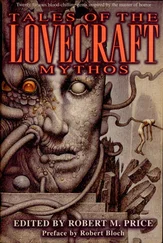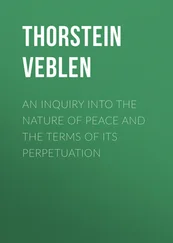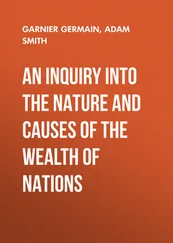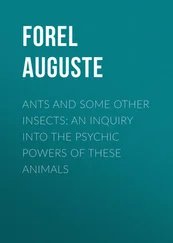Robert Pirsig - Lila. An Inquiry Into Morals
Здесь есть возможность читать онлайн «Robert Pirsig - Lila. An Inquiry Into Morals» весь текст электронной книги совершенно бесплатно (целиком полную версию без сокращений). В некоторых случаях можно слушать аудио, скачать через торрент в формате fb2 и присутствует краткое содержание. Жанр: Современная проза, на английском языке. Описание произведения, (предисловие) а так же отзывы посетителей доступны на портале библиотеки ЛибКат.
- Название:Lila. An Inquiry Into Morals
- Автор:
- Жанр:
- Год:неизвестен
- ISBN:нет данных
- Рейтинг книги:3 / 5. Голосов: 1
-
Избранное:Добавить в избранное
- Отзывы:
-
Ваша оценка:
- 60
- 1
- 2
- 3
- 4
- 5
Lila. An Inquiry Into Morals: краткое содержание, описание и аннотация
Предлагаем к чтению аннотацию, описание, краткое содержание или предисловие (зависит от того, что написал сам автор книги «Lila. An Inquiry Into Morals»). Если вы не нашли необходимую информацию о книге — напишите в комментариях, мы постараемся отыскать её.
Lila. An Inquiry Into Morals — читать онлайн бесплатно полную книгу (весь текст) целиком
Ниже представлен текст книги, разбитый по страницам. Система сохранения места последней прочитанной страницы, позволяет с удобством читать онлайн бесплатно книгу «Lila. An Inquiry Into Morals», без необходимости каждый раз заново искать на чём Вы остановились. Поставьте закладку, и сможете в любой момент перейти на страницу, на которой закончили чтение.
Интервал:
Закладка:
When something new and Dynamic wants to come into the world it often looks like hell, but it can get born in New York. It can happen. It seems like it could happen anywhere but that’s not so. There has to be a certain kind of people who can look at it and say Hey, wait a second! That’s good! without having to look over their shoulder to see if somebody else is saying the same thing. That’s rare. This is one of the few places in the world where people don’t ask whether something’s been approved somewhere else.
That, Phædrus thought, is how the Metaphysics of Quality explains the incredible contrasts of the best and the worst one sees here. Both exist here in such terrific intensity because New York’s never been committed to any preservation of its static patterns. It’s always ready to change. Whether you are or not. That is what creates its horror and that is what creates its power. Its strength is its looseness. It’s the freedom to be so awful that gives it the freedom to be so good.
And so things keep happening here all the time that have this Dynamic sparkle that saves it all. In the midst of everything that’s wrong, it sparkles.
Like the kids. You don’t see them but they’re here, growing like mushrooms in secret places. Once Phædrus went to a museum on a weekday morning and there were hundreds of them pointing at all the minerals and dinosaurs and grabbing each other’s arms and holding hands, laughing and watching their teacher from time to time to see if everything was all right. Then suddenly they all vanished and it was as though they had never been there.
What you see in New York depends on your static patterns, What makes the city Dynamic is the way it always busts up whatever those patterns are. This morning, in the restaurant, this black, jet-black thug-like guy with a dirty wool cap pulled over his head comes in. Dirty blue satin sports jacket, Reebok shoes, also dirty. Orders a coffee which they have to serve him because it’s the law and then what does he do? Does he pull out a gun? No. Guess again. He pulls out a New York Times. He starts reading. It’s the book review section. He’s some kind of an intellectual. This is New York.
Wham! You’re always seeing something you’re not set up to see. It’s not been all bad, this rich-poor contrast. When you pass a lot of static laws to cut out the worst, the best goes with it, the sparkle disappears and what’s left is just a lot of suburban blandness. It’s been a psychological fuel that’s jet-propelled a lot of people into doing things they might have been too lazy to do otherwise. If everybody here had the same income, same clothes, same background, same opportunities, the whole city would go dead. It’s this physical proximity and incredible social gulf that gives this place such power. The city brings everyone up a notch. Or down ten notches. Or up a hundred notches. It sorts them out. It’s always been that way, millions of rich and poor all mixed together, skyscrapers and parks, diamond tiaras in the windows and drunken vomit on the street. It really shocks you and motivates you. The Devil is taking the hindmost right before your eyes! And just beyond the beggars go the frontmost, chauffeur-assisted, into their stretch limousines. Yeow!! Keep moving! Don’t slow down!
You see the people who smile at you and are ready to cheat you. Sometimes you miss the ones who scowl at you but secretly support you in every way they can.
When you talk to them they treat you with a ten-foot pole, but at the other end of it you sense this guarded affection. They’re just survivors whose rough edges are all worn smooth. They know how this celebrity of a city works.
It was getting darker now. And colder too. An edge of depression was approaching. Sooner or later it always appeared. The adrenalin was about normal now and still dropping. His walking had slowed down.
Phædrus reached what he recognized was the edge of Central Park. It was windier here. From the northwest. That’s what was bringing all this cold weather. The trees were dark now and billowing heavily in the wind. They still had their leaves, probably because it was nearer the ocean here and warmer than back at Troy and Kingston.
As he walked along he saw the park still kept its quiet, genteel look despite everything.
Of all the monuments the Victorians left to the city, this masterpiece of Olmstead and Vaux’s was the greatest, he thought. If money and power and vanity were all they were interested in, why was this place here?
He wondered what the Victorians would think about it now. The skyscrapers all around it would astonish them. They would like the way the trees have grown so big. He had an old Currier and Ives print of the park that showed the park almost barren of trees. Probably they would think the park was fine. Elsewhere in New York they would have other opinions.
They certainly put their stamp on this city. It’s still here, under all the Art Deco and Bauhaus. The Victorians were the ones who really built New York up, he thought, and it’s still their city deep down inside. When all their brownstones with their ornate pilasters and entablatures went out of style they were considered the apotheosis of ugliness, but now, as their buildings get fewer every year, they give a nice accent to all the twentieth-century slick.
Victorian rococo brickwork and stone work and iron work. God, how they loved ornateness. It went with their language. The final ultimate proof of their rise from the savages. They really thought they had done it in this city.
Everywhere you still see little signs of what they thought about this city. All the baroque brownstone friezes and gargoyles waiting for the wreckers' ball. The riveted iron bridges in Central Park. Their wonderful museums. Their lions in front of the public library. They were sculpting an image of themselves.
All this unnecessary ornateness they left behind: that wasn’t just vanity. There was a lot of love in it, too. They gussied this city up so much partly because they loved it. They paid for all these gargoyles and ornamental iron work the way a newly rich father might buy a fancy dress for a daughter he’s proud of.
It’s easy to condemn them as pretentious snobs, since they openly invited that opinion, and ignore the history that made them that way. They did everything they could to ignore that history themselves. What the Victorians never wanted you to know was that actually they were nothing more than a bunch of rich hicks. For the most part they were rural, backwater, religion-bound people who, after the Civil War had disrupted their lives, suddenly found themselves in the middle of an industrial age.
There was no precedent for it. They really had no guidelines for what to do with themselves. The possibilities of steel and steam and electricity and science and engineering were dazzling. They were getting rich beyond their wildest dreams, and the money pouring in showed no signs of ever stopping. And so a lot of the things they were later condemned for, their love of snobbery and gingerbread architecture and ornamental cast-iron, were just the mannerisms of decent people who were trying to live up to all this. The only wealthy models available were the European aristocracy.
What we tend to forget is that, unlike the European aristocrats they aped, the American Victorians were a very creative people. The telephone, the telegraph, the railroad, the transatlantic cable, the light bulb, the radio, the phonograph, the motion pictures and the techniques of mass production — almost all the great technological changes that are associated with the twentieth century are, in fact, American Victorian inventions. This city is composed of their value patterns! It was their optimism, their belief in the future, their codes of craftsmanship and labor and thrift and self-discipline that really built twentieth-century America. Since the Victorians disappeared the entire drift of this century has been toward a dissipation of these values.
Читать дальшеИнтервал:
Закладка:
Похожие книги на «Lila. An Inquiry Into Morals»
Представляем Вашему вниманию похожие книги на «Lila. An Inquiry Into Morals» списком для выбора. Мы отобрали схожую по названию и смыслу литературу в надежде предоставить читателям больше вариантов отыскать новые, интересные, ещё непрочитанные произведения.
Обсуждение, отзывы о книге «Lila. An Inquiry Into Morals» и просто собственные мнения читателей. Оставьте ваши комментарии, напишите, что Вы думаете о произведении, его смысле или главных героях. Укажите что конкретно понравилось, а что нет, и почему Вы так считаете.











